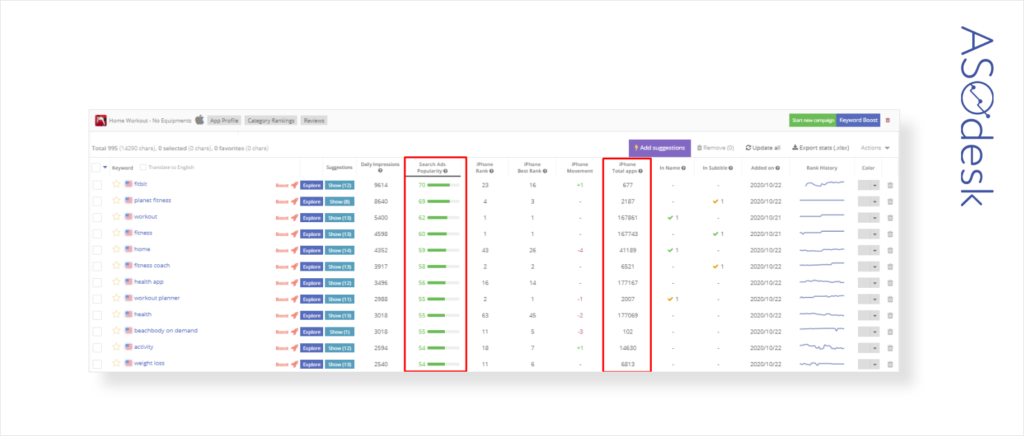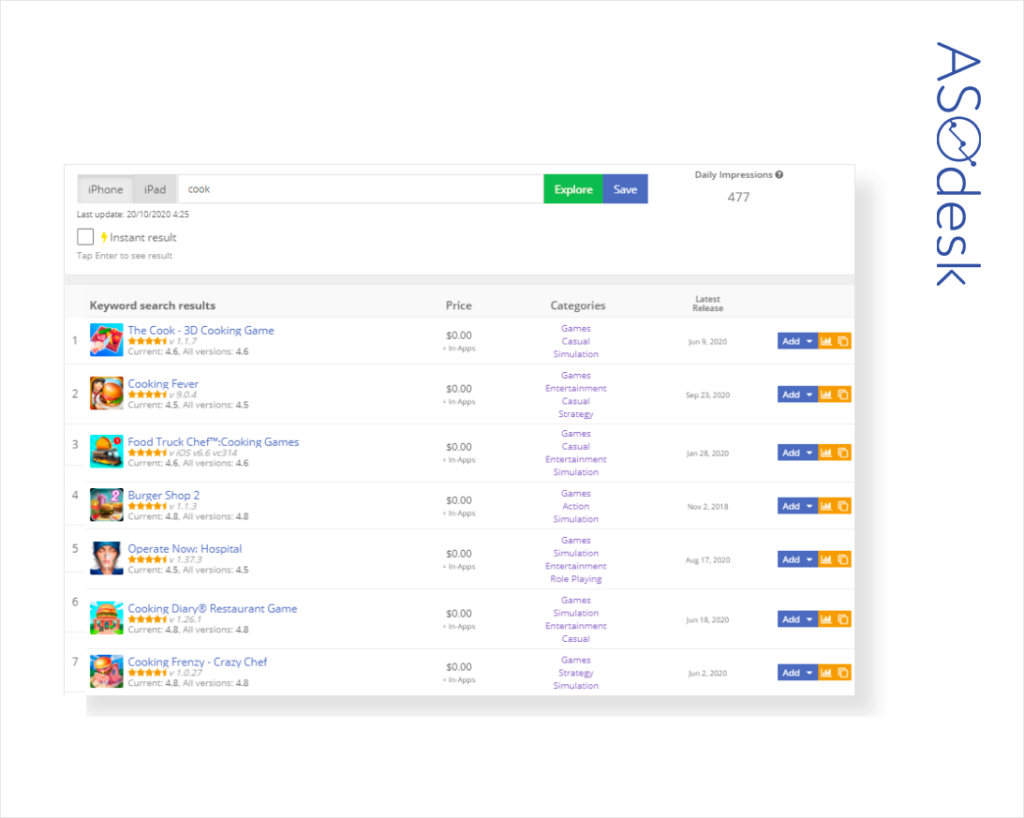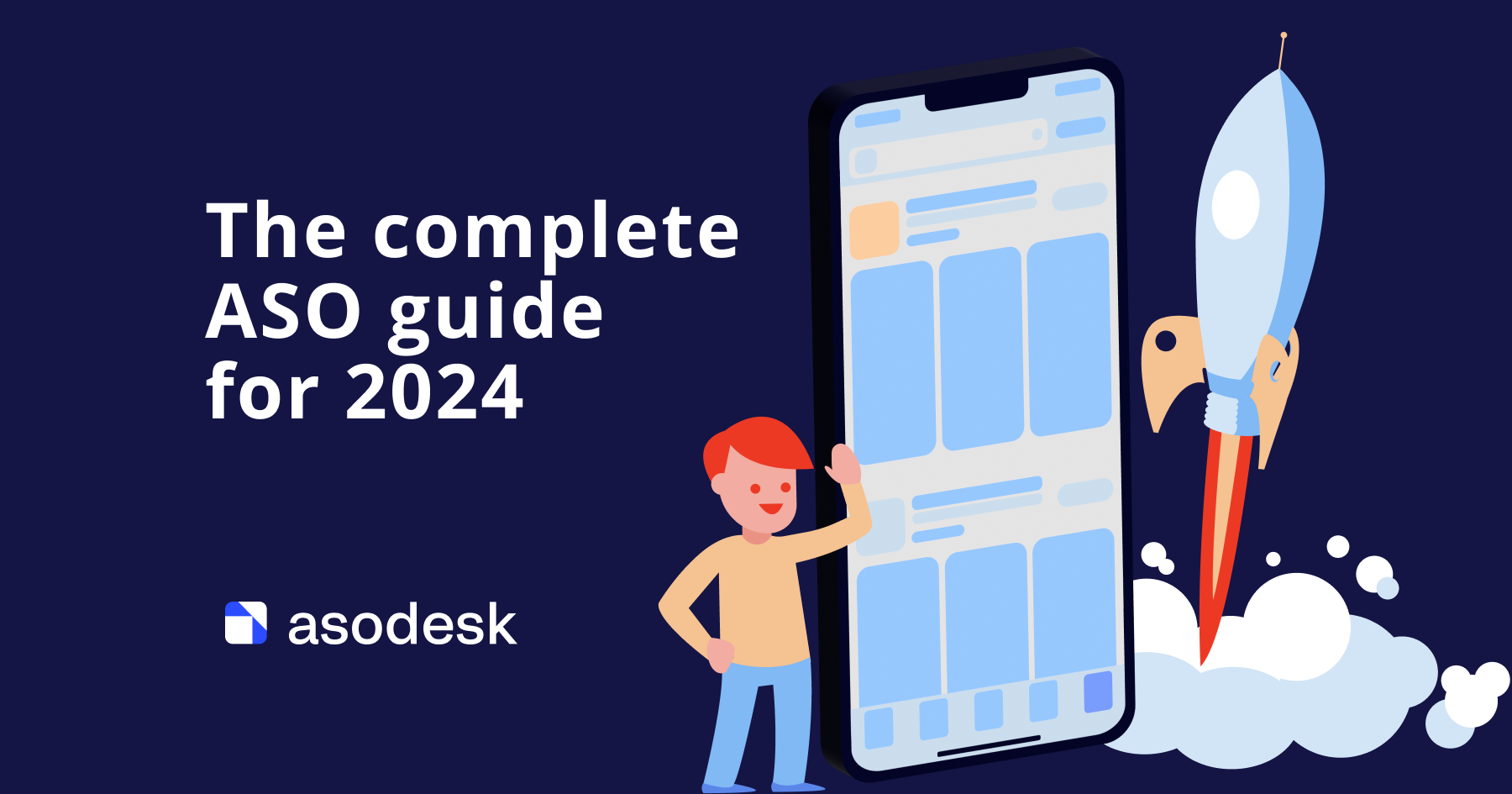When ASO will start bringing results

The results of the App Store Optimization can be disappointing. To prevent this from happening, you need to understand the nuances of the niche and build realistic expectations. In this article, we will discuss which factors affect app promotion, when the result of ASO will be noticeable and what to do if expectations have not been met.
When we finally get a return on ASO depends on many factors. For example, for niches where there is a large percentage of organic traffic and non-branded queries, and the competitive pressure is not high, traffic from search will come within a month from the start of ASO. The costs in such niches pay off after 2–3 months of constant work, provided that other marketing channels are used in addition to ASO.
ASO results are often difficult to predict, because they depend on a combination of external and internal factors. Let’s take a closer look at what plays a role in this process, and how to determine how long it will take for ASO to bring results.
What influences the effectiveness of ASO
Correctly assess external and internal factors affecting the application. After that, you can understand how to minimize threats and enhance optimization opportunities.
External Factors
1. Market competition level
If a new and unknown application is just starting to enter the market, App Store Optimization will not be enough for promotion. For example, the market of fitness apps in Russia is highly competitive. 2063 applications are indexed by the search query “fitness at home”, 9737 are indexed by “sports”, and 7683 by “fitness”.
Currently, App Store and Google Play searches do not show applications beyond position 250. Even after optimization, a new fitness app may end up in an invisible area.
2. Percentage of branded traffic in a niche
With a high percentage of branded traffic in the niche, ASO will play a secondary role. For example, in the niche of social networks, users search for apps by branded queries, such as: TikTok, Instagram, Facebook. There are far fewer non-branded queries, and users rarely use them in search.
Therefore, creating a social network and just doing the ASO won’t be enough for you. It is necessary to engage in brand promotion: write articles about your application, promote yourself using targeted and contextual advertising, banner advertising and influencer integration. You can learn more about how to determine the percentage of branded traffic in a niche in this article.
3. Percentage of organic traffic per category
The organic traffic percentage shows how often people install an app from app store search, App Store and Google Play editorials. For example, in the “utilities” category, 87.3% of users install an application from search.
This means that applications in this category need to be promoted using App Store Optimization, since it gives the highest percentage of installs. Learn about the percentage of organic traffic in your category in this article.
4. App Store Updates
Changes in the App Store, Google Play and AppGallery can affect an application both positively and negatively. For example, iOS 14 added an auto-correction and auto-complete functionality. Because of this, applications that were indexed by misspelled branded queries lost some of their traffic.
5. App Store Pricing and Rules
Changes in fees and rules can have both positive and negative effects. For example, starting September 30, 2021, a 30% commission will apply to all purchases on Google Play. It will not be possible to receive payment directly through the application — now you need to go through Google Play. This will force app publishers to raise prices, which will lead to a fall in demand for in-app purchases.
6. Changes in user demand and needs under the influence of world events
Search traffic for certain queries can increase or decrease depending on the situation in the country or around the world. For example, from January to March, downloads of travel apps dropped by 47.58%. However, some brands have managed to adapt to the current situation. For example, BlaBlaCar, a marketplace for carpooling, has launched an application to help neighbors during the pandemic.
7. Underhanded methods of competition
The position of applications can be negatively influenced by the advertising campaigns of competitors, the entry of new players into the market, and underhanded methods of dealing with competitors. For example, a competitor may buy negative reviews, which will cause your app to drop in Google Play search. In the App Store, reviews do not affect an app’s ranking.
External factors can negatively affect not only ASO results, but also user demand. Developers, mobile marketers and ASO specialists must be flexible, follow industry news and changes in the App Store and Google Play rules, as well as analyze competitors and adapt to the current market situation.
Internal Factors
1. Errors after app updates
An unsuccessful update can increase the number of bugs. Users will start to uninstall the app en masse and give it a low rating. This will lead to a lower ranking in Google Play search. For more information on the factors that influence the ranking of apps in search, read our article.
2. Ill-considered changes in the ASO strategy
Developers or mobile marketers can change the title, description, screenshots and icons without consulting an ASO specialist. You can see the result of this on the chart. One of the clients did not ask for advice and independently made changes to the name and description of the application. Because of this, the app’s position fell sharply.

Remember that ASO is one way to promote, not a magic wand. Like any marketing channel, App Store Optimization only brings results with regular product development. This is why it is so important to build trust between ASO, development departments and UA.
What results to expect from optimization
We conducted a survey of ASO specialists in the Telegram channel “ASO & ASA Channel”. For 17% of specialists, the results from ASO are noticeable after a month of work, and for 19% specialists, after 2–3 months. Whereas 52% of specialists clicked “View Results”.
Before starting ASO, it is important to adequately assess the situation. The ASO effect will be close to zero if:
1. The application is just entering a highly competitive market and you plan to promote only through ASO
Paid and search traffic are interconnected. The more people download an app from ads, the higher it moves in search. If there are no downloads, then search progress will slow down.
A new app cannot enter a highly competitive market only through App Store Optimization. The application may not even be indexed in the search for most queries and remain below the 250 position.
Therefore, in addition to ASO, other promotion channels are needed: in-app advertising, contextual advertising, paid traffic, brand development.
If you are promoting only through ASO, then after 1-3 iterations (optimization cycles) there will be no effect. But at the expense of ASO, you will create a base for further promotion and the application will begin to grow faster in search after advertising and other marketing activities.
2. App copied from popular competitor
You can’t take an idea of a competitor, make the same application and expect ASO to help you advance. A strong competitor will always be more popular, since it is not engaged in ASO, but also in brand development and paid advertising. In addition, users will see that the product is copied or does not carry value. As a result, the app’s rating will fall, which will negatively affect its promotion.
ASO will be effective if:
1. You use other channels: develop branding, buy paid traffic, use in-app ads, contextual, targeted and banner ads.
Thanks to paid traffic, the number of downloads is growing, as a result, the application is promoted in search. And ASO reduces installation costs. ASO in conjunction with other marketing programs increases the number of installs much more and faster. In this case, significant results can be achieved as early as 2-3 months after the start of optimization.
2. There is no budget for paid promotion, but you are doing ASO for several countries at once
When an application is promoted to 2 or more countries at once, the installation grows much faster, since you get several times more traffic. The more countries you cover and the lower the competition in these markets, the faster the ASO effect will be noticeable.
We have created a diagram, which help you to determine what to expect from ASO in your case.

What to do if your ASO expectations have not been met
1. Check if everything is in order with the app
See if there are any errors in it, analyze the rating, read reviews, estimate the user retention rate. It is important to make sure the problem is on the marketing side, not the product side. App Store Optimization of a low-quality product is useless; it can only have a temporary effect.
2. If everything is in order with the application, analyze the changes in the volume of the semantic core and the positions of the application by keywords
It is important to look at what keywords the application is being indexed by at present. How the positions of the application rose or fell.
Analyze the semantic core of the application
Using the ASOdesk Comparative Report tool, you can evaluate which keywords caused the positions of the application rise or fall. You can filter keywords and see which ones need to be removed from the semantic core.

And then check the keywords for which the indicators are growing. For example, we see that we have moved up 43 positions for the query “woman workout home fitness app”. In this case, you can find more similar queries and add them to the semantic core.

Check for which keywords you lost positions and left the top. For this, take a look at the Semantic Chart.

In the Top graphs, we see that we are losing positions. For example, we lost the top 1 position for the keyword “workout men”, “lose weight”, “fitness for men”, “workout apps for men”, “ejerico”.
Changes in positions may be associated with increased competition. In this case, it is worth finding other queries for which it will be sensible for us to promote. Add less competitive keywords to your existing keywords, title or description.
See competition and app rankings by keywords
To check your keyword competition, use the Keyword Table in Keyword Analytics.
The Search Ads Popularity column displays the popularity of a query among App Store users. If you are just getting started with ASO, insert keywords with less than 40 Search Ads in the title and subtitle. The iPhone Total apps column shows how many apps are displayed for a given keyword.

We can see the queries that are in the Title and Subtitle, as well as the movement of our positions by days (the Rank History column). iPhone Movement shows, how our positions changed. For example, we can see that the app for the keyword “fat burning” lost 13 positions.

If the app continues to fall, insert a different combination of keywords in the title and description. You need to keep the keywords for which the application rises and remove the keywords for which the application falls.
Explore search suggestions
If the competition for a keyword is reasonable, it is far from certain that it should be used. See if the app is relevant to the keywords you selected.
For example, we might assume that the query “cook” is relevant to a cooking app with recipes. In fact, for this query, users see cooking games in the search results.
The keyword “cook” will not bring installs to our application, so it should be removed from the name.

Analyze the keywords which bring installs
The keywords which bring the largest number of installs need to be added to the name and description of the application. In Organic Report you can see the estimated number of installs.

During the analysis, you will understand which keywords need to be used in the next iteration, and which, on the contrary, are not very effective and can be excluded.
This way we will find out if incoming installs from important keywords have not been lost and whether it has been possible to increase the number of keywords which bring installs.
3. Conduct a comparative analysis of your application and those of competitors
There are situations when you haven’t changed anything in the ASO strategy, but the app’s positions fell due to the activity of competitors. Competitor analysis will give you:
- Query Ideas. You will see which queries cause the competitors’ applications to rise or fall.
- Ideas for graphical optimization.
- Application growth hypotheses. During the analysis, you will notice the features that competitors are using in the application, and you will be able to adapt their ideas for your application.
You will learn more about all stages of competitor analysis in this article.
Conclusions
1. The number of installs and income from the application are influenced not only by ASO, but also by external and internal factors, such as: algorithms of app stores, the percentage of branded and organic traffic in the niche, the behavior of competitors and changes in the structures of user demand.
2. In combination with other marketing channels, ASO can have a quick and significant impact. As a rule, the first results are noticeable after a month of promotion, the number of installs and traffic increase within 2-3 months. Each search query for which we have placed an application becomes a growth point. If the number of installs from advertising channels increases, the application increases for all search queries at the same time.
3. The effect of ASO will be very weak for new applications that are promoted in a highly competitive market in one country and without using paid channels. Such an application will be ranked for a number of queries, but for many queries, users simply will not see it, since the positions in the search will be very very low.
4. If you are not satisfied with the ASO results:
- Check if there is a problem in the application.
- Analyze the results of the iterations, find keywords that can be used in the next iteration.
- Conduct competitor analysis, find growth hypotheses that can be used for your application.










